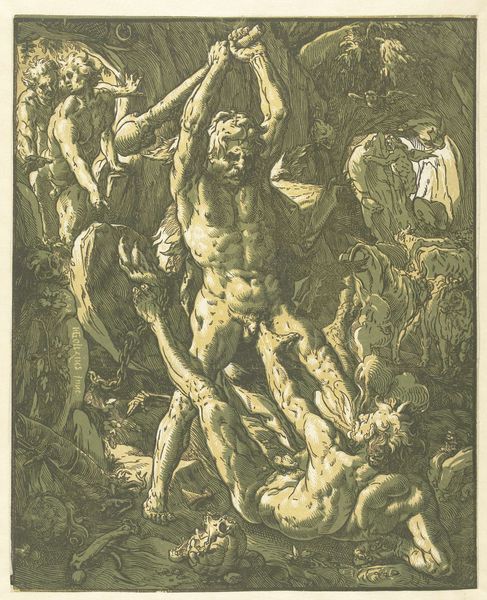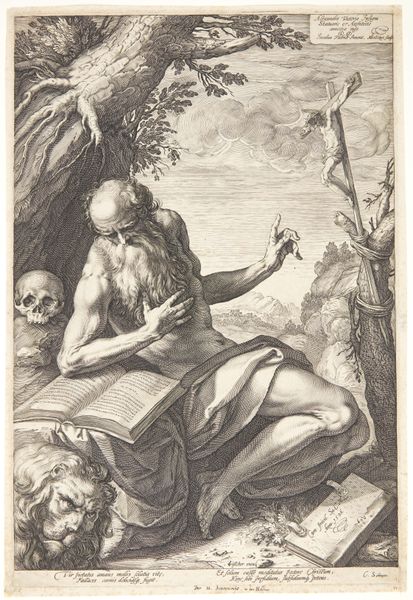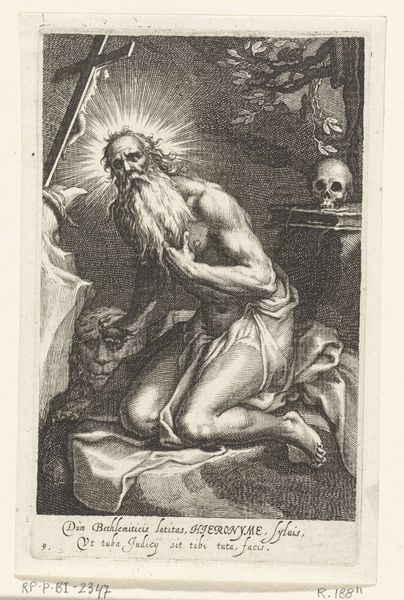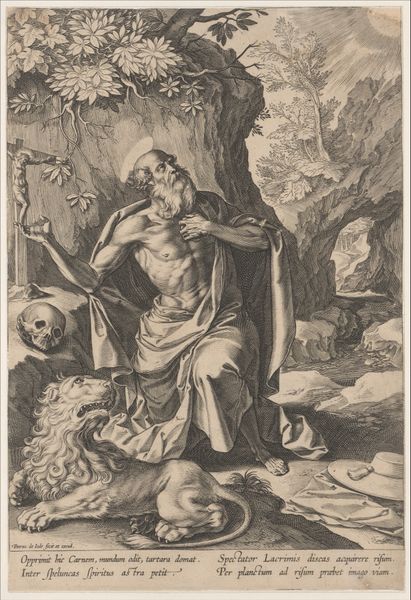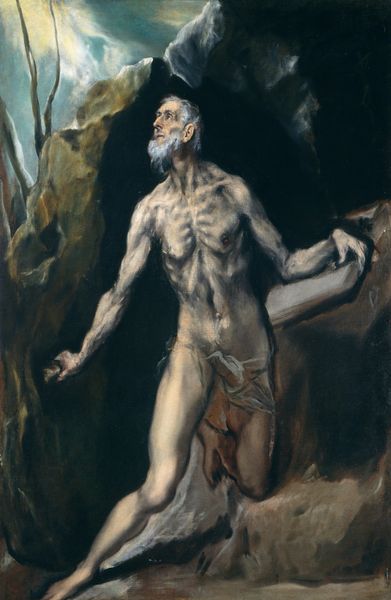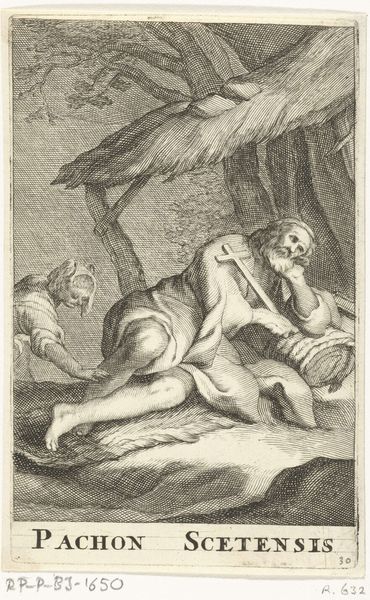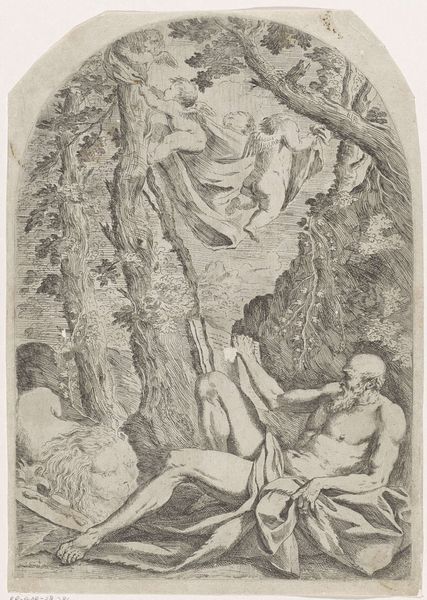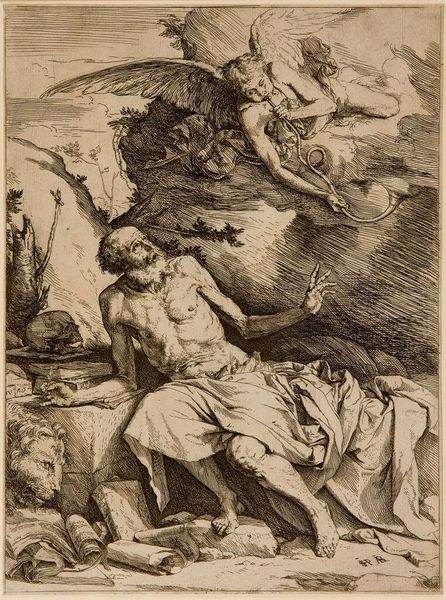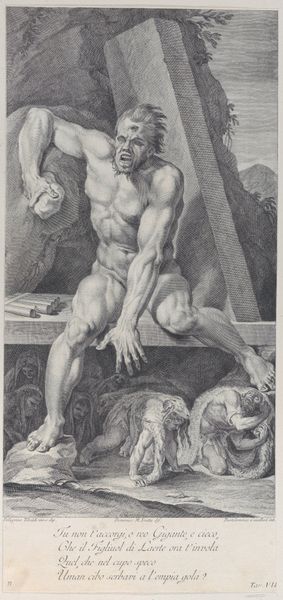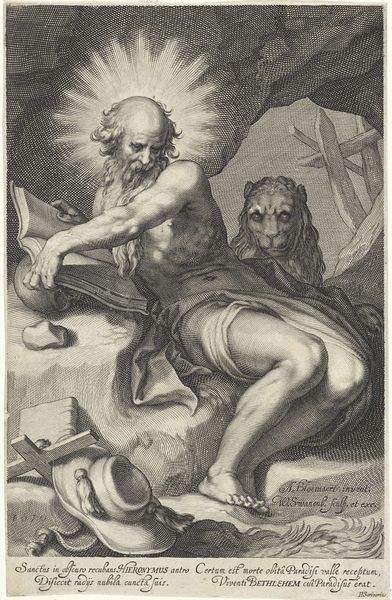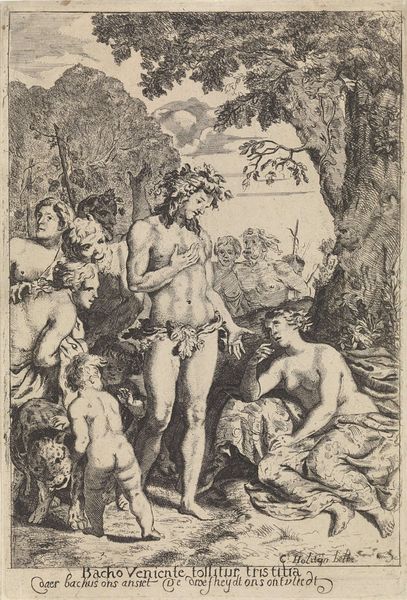
painting, oil-paint
#
portrait
#
venetian-painting
#
narrative-art
#
painting
#
oil-paint
#
11_renaissance
#
oil painting
#
history-painting
#
realism
Copyright: Public domain
Curator: The sheer rawness of the scene strikes me immediately. Look at the light catching the Saint's flesh against the dark browns and greens of the landscape. There's a real sense of struggle embedded in those brushstrokes. Editor: Indeed. And considering how these pieces function culturally – Saint Jerome in Penitence, a narrative brought to life in oil paint. It's worth examining the means through which Titian constructs this historical figure for the consumption of his audience. The visuality, and the socio-political reasons behind it. Curator: I agree. There's a strong emphasis on the body, and how physical and psychological labor converge in the image. His wrinkled skin and bony frame are not idealized, yet possess an earthy grandeur. It begs the question, what kind of materials did he use and what workshop practices underpinned its making? What does this tell us about 16th-century artistry and craftmanship? Editor: Interesting perspective. Titian, as a shrewd actor within the social structures of his time, would undoubtedly recognize the symbolism attached to the materiality of his art and of labor itself. Oil paint in Venice, as a globally connected hub, possessed a particular prestige and historical charge. The work seems to depict the hagiography surrounding Jerome's life and penance in the Syrian desert, which he performed after giving up a life of wealth and erudition in Rome. His retreat became a way of demonstrating piety but it simultaneously helped translate scriptures to Latin. Curator: The artist invites us to contemplate human frailty, but also resilience, when juxtaposed with items around him such as the stone where he rests his arm, for example, which offers both literal support but seems more metaphorical: to stay the course. Look closely to his face, you’ll appreciate the artist’s dedication. Editor: These figures are produced through networks, shaped by institutions and for specific audiences. Consider the location, reception, and how this painting's cultural power worked. It speaks volumes about Renaissance values of power and the political deployment of imagery. The use of "history painting," realism, and portrait are of importance for any such study of Venice in the late 1500s. Curator: Such dialogues can help deepen the viewers’ experience when understanding what truly made this piece possible, beyond just admiring the painter’s talents. Editor: Agreed, these are compelling ways to recontextualize its ongoing significance and power for future generations.
Comments
No comments
Be the first to comment and join the conversation on the ultimate creative platform.


